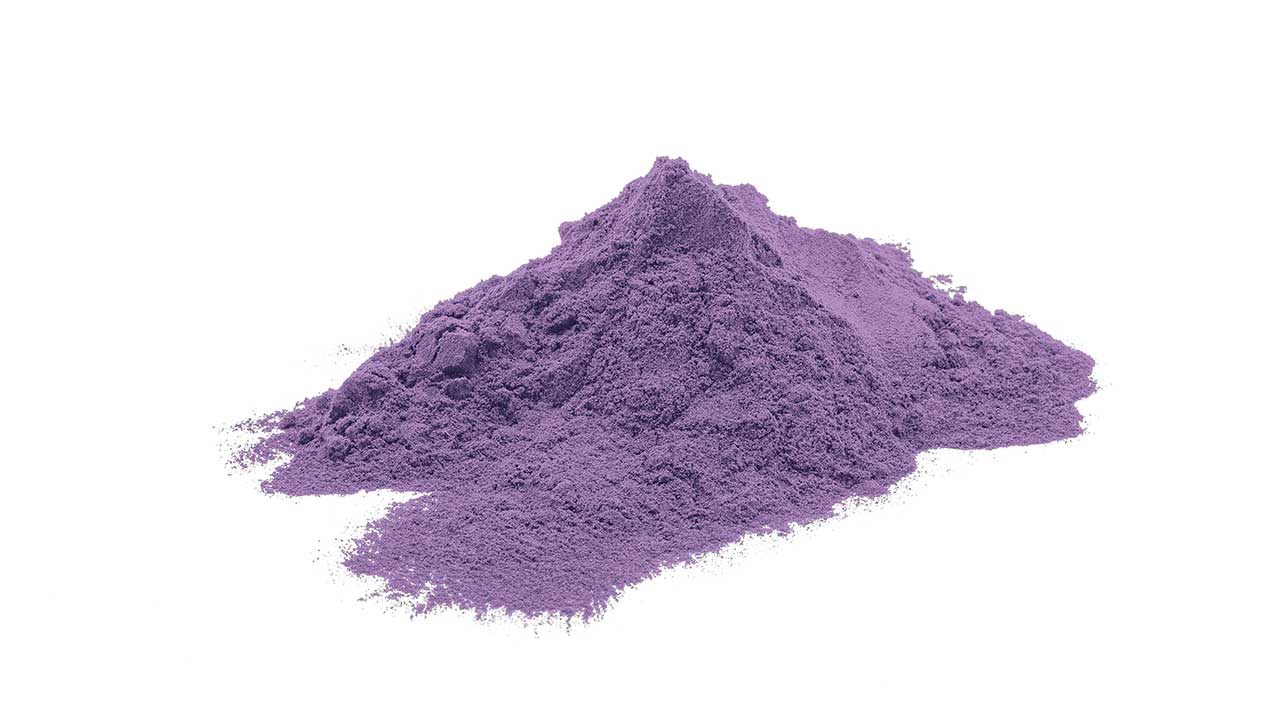
Purple heroin is a street drug that has only recently made its first appearance in the heroin market within the last few years. It is often referred to simply as “purp.”
The first mentions of this type of heroin came around 2018, but it has already been responsible for a number of opioid overdose deaths.
What Is Purple Heroin Made Of?
It would be impossible to know what a single batch of purple heroin is made of without extensive testing.
In general, however, purple heroin is typically made up of heroin and at least one other synthetic opioid.
Heroin
The main component in purple heroin is usually heroin itself, a powerful semi-synthetic opiate that is very potent and addictive.
The base of purple heroin can be made from either white powder heroin or brown powder heroin. The final result is rarely actually purple in color, and is more of a gray color.
However, it is also possible to find purple heroin that contains no heroin at all.
Fentanyl
Fentanyl is a synthetic opioid that is very potent, up to 50 times more potent than heroin and 100 times more potent than morphine.
Carfentanil
Carfentanil is extremely potent, up to 100 times more potent than fentanyl and 10,000 times more potent than morphine. This drug was created to be an elephant tranquilizer.
This type of synthetic opioid is so potent, that anyone handling it must wear gloves and a mask to protect from accidental inhalation.
Brorphine
Brorphine is a synthetic opioid that was created to be a safe alternative to fentanyl, but it was found to be just as dangerous as fentanyl and potentially even more potent.
While it was created for medical use, brorphine was instead deemed illegal and never approved for human testing.
It is the presence of brorphine in purple heroin that gives it its characteristic gray color, which can range from light to dark in tone.
Flualprazolam
Flualprazolam is a designer benzodiazepine that is similar to Xanax, but was never marketed to the public and is illegal in the United States and many other countries.
Acetaminophen
Acetaminophen is the main ingredient found in the pain reliever Tylenol. In addition to being a pain reliever, acetaminophen is also a fever reducer.
Buspirone
Buspirone is an anti-anxiety medication that has similar properties to benzodiazepines but is considered an alternative to benzos.
Niacinamide
Niacinamide is a type of B3 vitamin that is often used to prevent and treat niacin deficiencies. It can also be used to treat acne and to improve the appearance of skin tone.
Where Is Purple Heroin Found?
Purple heroin has been found in multiple states across the United States but most prominently in Michigan and Louisiana.
So far, the drug has been responsible for overdose deaths in Arizona, Minnesota, Michigan, and Louisiana.
Numerous public health agencies in Michigan, including the Department of Health and Human Services, have issued warnings against the rise of purple heroin.
How Is Purple Heroin Used?
Purple heroin is sold in powder form, and can thus be snorted or smoked immediately upon purchase.
This drug can also be used by intravenous (IV) injection once the powder has been dissolved into a liquid form of heroin.
Purple heroin in its liquid form can also be inserted nasally using a medical dropper.
Dangers And Risks Of Purple Heroin
Purple heroin can be incredibly dangerous, even more dangerous than heroin when found by itself without any additives.
Potential For Addiction
Purple heroin comes with the same risks of addiction as traditional heroin and opioid use, but may be even more addictive due to its increased potency.
In fact, it is believed that drug dealers started lacing their products with high-potency opioids not only to increase their profit but to also make their products more addictive.
Risk Of Overdose
The purple form of heroin can pose a particularly high risk of overdose, because of its potential to contain extremely potent opioid additives.
It can also be very difficult for a person to measure out a dose of purple heroin when they cannot be entirely sure of what is in it.
Fortunately, heroin overdoses are reversible because of the life-saving medication known as naloxone. This medication is often called the opioid overdose antidote.
Naloxone is carried by law enforcement officers and it is also available in many states at licensed pharmacies as a nasal spray under the brand name Narcan.
Purple Heroin Addiction Treatment
Although the withdrawal symptoms of heroin are not life-threatening, it is not recommended that anyone try to overcome an addiction to heroin or any kind of opioid on their own.
Medical Detoxification
Medical detox is an integral part of any addiction treatment program. Using FDA-approved medications, people can overcome their addiction more comfortably.
It is also much safer to go through heroin detox under the supervision of medical professionals, as they can provide clinical support in the event of problems.
Evidence-Based Treatments
Evidence-based treatments for heroin addiction often include the use of approved medications when treating addiction, but can include many other types of treatment as well.
Types of treatments included as evidence-based are those which do not follow a 12-step model and which are based on science and research.
Find Substance Use Disorder Treatment For Heroin Addiction Today
If you or one of your loved ones is currently living with an addiction to purple heroin or any other type of opioid, please consider giving our helpline a call.
We can help you start your recovery journey and answer any questions that you have about substance abuse treatment. Call our helpline today to get started.
Article Sources- Department of Justice/Drug Enforcement Administration (DEA)
https://www.dea.gov/sites/default/files/2020-06/Heroin-2020.pdf - Detroit Free Press
https://www.freep.com/story/news/local/michigan/2020/10/15/purple-heroin-overdose-death/3658999001/ - National Institute on Drug Abuse (NIDA)
https://nida.nih.gov/publications/research-reports/heroin/what-heroin - Substance Abuse and Mental Health Services Administration (SAMHSA)
https://www.samhsa.gov/medication-assisted-treatment/medications-counseling-related-conditions/opioid-overdose - Wayne State University
https://today.wayne.edu/medicine/news/2020/10/14/michigan-poison-center-issues-warning-about-purple-heroin-40724


